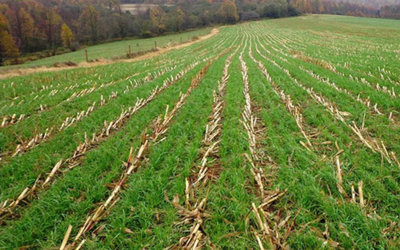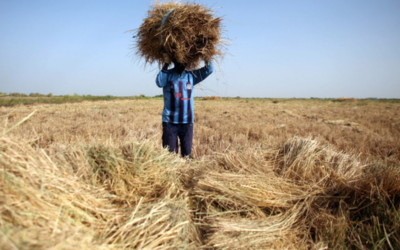
Cover Crop
A Cover Crop is a specific plant crop, which is mainly grown for the benefit of soil rather than the crop yield. Cover crops are commonly used to help suppress weeds, manage soil erosion and improve soil fertility and quality, and control diseases and pests. Cover crops are usually grasses or legumes but may be include of other green plants.
Cover crops are plants grown outdoors for the purpose of increasing the quality of the soil. They help make regulate water, increase biodiversity, and improve farming as a whole. These types of crops are also used in landscaping to enhance the look of a property.
Cover crops stay low or less to land, are cheap to plant, and they do not require much maintenance. The popular options for cover crops are wheat, clover, rye, mustard, peas, and sudangrass. Cover crops are mainly used in large farms or land in-ground garden rather than raised beds.

Why grow cover crops: –
Cover crops are plants grown to save or improve the soil for future crops. Covering the soil in winter protects it from erosion and helps support all the beneficial life associated with it. This gives weed less opportunity to establish, meaning cleaner bed for sowing or planting in spring. At the end of winter, dig the covered crop into the ground and it will rot down to add valuable organic material in the soil, which will helping to feed the plants that follow.
Benefits of Cover Crop: –
1. Cover crops improve biodiversity by increasing the variety of species in a given area. They also can help in reduce the amount of water that drain off an area, and prevents waterways and downstream ecosystem from erosion. Because roots of the cover crop make holes in the soil, cover crops help allow water to filter deep into the ground. As a result, cover crops help conserve water in many ways.
2. Cover crops can help break disease cycles by reducing the amount of bacteria and fungal diseases in the soil. If you have a soil that is infected, then you can plant a cover crop in that area as a means of eradicate the disease.
3. Cover crops are sometimes called “green manure” because they provide nutrients to the soil, as it manure does. They are also called “living mulches” because they can prevent soil erosion. A mulch is a layer of organic material, such as crop residue, which is left on the surface of the soil to prevent the drainage of water and protect the soil from the harmful effects of heavy rainfall.




